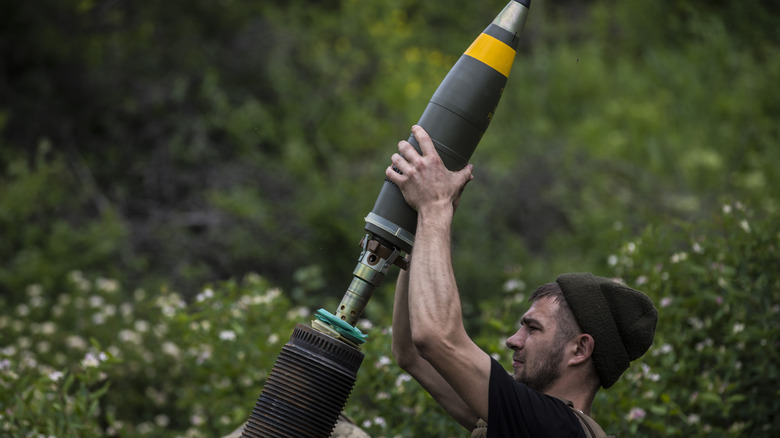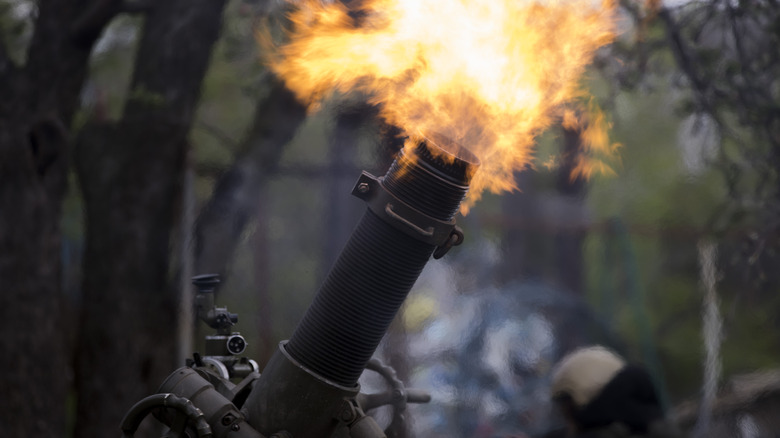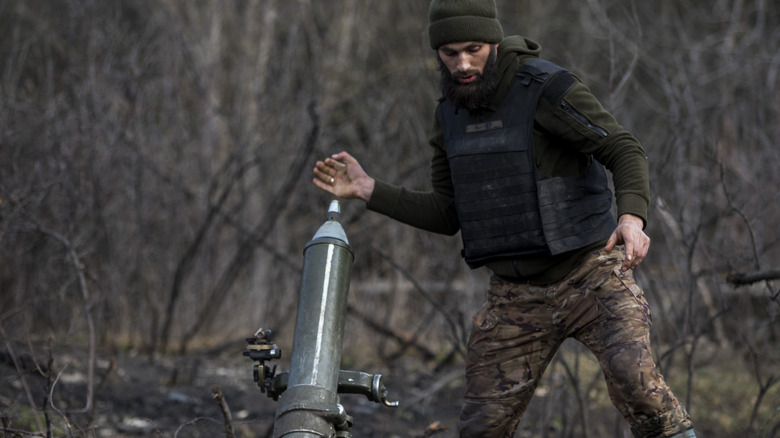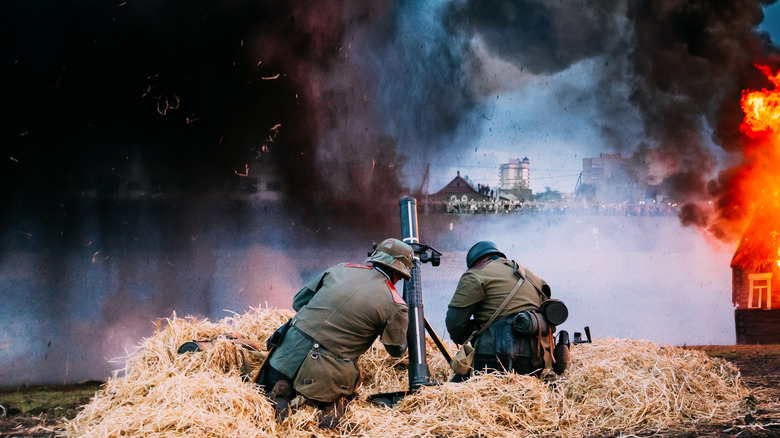How A Military Mortar Really Works (And Why Its Been Used For Hundreds Of Years)
As technological innovations have turned military combat into scenarios reminiscent of vintage science fiction, one weapon has consistently held its ground for centuries — the mortar. Its design might have evolved with the times, but the basic principle behind its operation remains unchanged.
To operate, a soldier drops a shell into its tubular structure, launching it skyward, allowing it to descend on targets often hidden from direct sight. This straightforward mechanism is what gives the mortar its signature advantage. Valued for its simplicity and effectiveness in siege warfare and against fortified positions, this enduring weapon has become a mainstay on the battlefield.
While some military technology doesn't live up to the hype, that's not true with mortars. From the trenches of World War I to the rugged terrains of contemporary combat zones, the mortar has adeptly filled the void between the firepower of infantry and the might of larger artillery systems.
The mechanics of military mortars
The mortar's distinct appearance is dominated by its long, cylindrical body, typically crafted from high-strength steel. Anchoring this structure is the base plate. Not just a simple foundation, this plate plays a pivotal role in stabilizing the mortar. Absorbing the recoil ensures that the weapon remains grounded during operation. Inside this tubular design, a crucial component resides at its base – the firing pin. When struck by the shell's base, it's this pin that ignites the propellant and propels the shell skyward.
Of course, any discussion of mortars would be incomplete without touching on their diverse ammunition. Modern mortars can use a variety of rounds tailored to specific objectives – be it smoke for cover, illumination for nighttime operations, guided rounds for enhanced precision, or even shooting surveillance cameras into the sky. It's also worth noting that these shells are often equipped with tail fins designed to stabilize their flight and heighten accuracy.
Its unique firing capability truly sets the mortar apart from other weapons. Maintaining the element of surprise cannot be overstated in warfare, and mortars perfectly encapsulate this principle. Launching shells at a high-angle trajectory allows them to engage adversaries from concealed positions, bypassing obstacles and terrains. This means that enemies are targeted without the mortar team being directly in their line of sight — a tactical advantage that's hard to rival.
How mortars work: A step-by-step breakdown
The mortar crew begins by setting up their equipment, which includes positioning the tube, base plate, bipod, and sight, followed by ammunition selection. Stability is critical; thus, the mortar is set on a firm surface to guarantee precision and stability during firing. Once ready, the crew adjusts the tube's angle using target coordinates and chooses suitable ammunition. During firing, the tube is aligned to the specified angle, and the shell is loaded. Upon contact with the firing pin at the base, the propellant ignites, launching the shell along a high-trajectory path to the target.
After the shell's launch, the crew closely monitors its impact to determine accuracy. As the crew readies for the next stage of the assault, they position themselves for the following shots. Any necessary modifications are based on direct observations, feedback from forward observers, or additional intelligence. Effective communication is essential throughout. The crew stays in constant contact with command and forward observers to stay updated on any changes in directives and information on the mission's progress and results.
Why mortars have endured for centuries
If there's one word that sums up why mortars have endured over time, it's simplicity. Matthew Terreault, Mortar Systems Branch Chief at Picatinny Arsenal, describes it this way: "Mortars have historically been a cheap and effective form of indirect fire to provide suppression of enemies."
If we think about it, mortars are little more than a stout tube on a flat base, yet their impact on the battlefield is profound. Their design allows them to fire explosive projectiles at low velocities, short ranges, and high arcing trajectories. This simplicity in design makes them easy to manufacture, maintain, and operate. Their versatility stands out as well, making them useful in a range of combat scenarios, including open fields, rugged hills, and even urban environments. Since their high trajectory allows them to fire over obstacles, they're especially useful in trench warfare or against fortified positions.
We've already touched upon the fact that mortars can be fired from concealed positions, and this, coupled with their high trajectory, provides a tactical advantage, allowing mortar crews to engage enemies from positions of safety. They're also highly portable, allowing them to be transported quickly as needed and operated without extensive logistical support, making them a cost-effective solution for armies that require a balance between firepower and mobility. In an age of rapidly advancing military technology, the longevity of the mortar reminds us that sometimes, enduring solutions stem from the simplest of designs.



